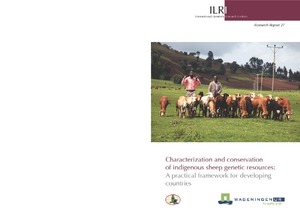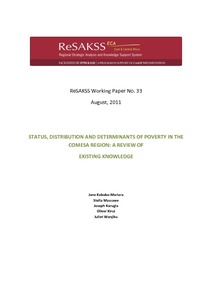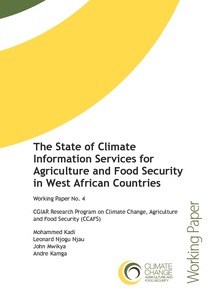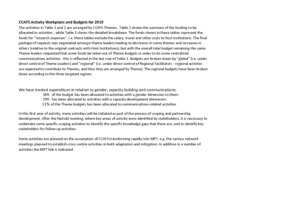The role of risk management in pastoral policy evaluation and poverty reduction
Characterization and conservation of indigenous sheep genetic resources: A practical framework for developing countries
Livestock characterization projects in developing regions are characterized by a mere physical description of traditionally recognized populations or a purely academic genetic description of populations. However, characterization of livestock resources is meant to serve the purpose of developing conservation and utilization programs. A national characterization project should be geared to the specific national livestock production objectives.
Status, distribution and determinants of poverty in the COMESA region: A review of existing knowledge
Poverty and vulnerability are among the major problems in Eastern and Southern Africa (ESA). To design appropriate poverty reduction initiatives for the region, it is not only important to understand the distribution of poverty but also the determinants. Various reports have documented information on the status, distribution and determinants of poverty in each of the countries.
Sustainable management of globally significant endemic ruminant livestock in West Africa (PROGEBE): Summary for decision making—The Gambia
The state of climate information services for agriculture and food security in West African countries
Neighbourhood Disputes (Dividing Fences and Trees) Act 2011.
The objects of this Act, consisting of 99 sections divided into six Chapters and completed by one Schedule, are: a) to provide rules about each neighbour’s responsibility for dividing fences and for trees so that neighbours are generally able to resolve issues about fences or trees without a dispute arising; and b) to facilitate the resolution of any disputes about dividing fences or trees that do arise between neighbours.
The Forgotten Billion: MDG achievement in the Drylands
As the world reviews its progress in tackling global poverty and achieving the Millennium Development Goals (MDGs), drylands can no longer be ignored. Drylands account for more than a third of the world’s land surface and more than 2 billion of its people. Yet for too long, drylands and their inhabitants have been neglected in development processes.
CCAFS Activity Workplans and Budgets for 2010
Enhancing livelihoods of poor livestock keepers through increased use of fodder in Syria
CGIAR Research Program on Dryland Systems
CRP 1.1 was presented at the 4th Fund Council Meeting in April 2011. CRP1.1 targets the poor and highly vulnerable populations of the dry areas. It aims to develop technology, policy and institutional innovations to improve livelihoods, using an integrated systems approach. The program focuses on four strategic research themes (SRTs ) which cut across five focus regions. This CRP was approved with conditions at the meeting and subsequently received unconditional approval of inception phase & conditional approval of overall program & budget on Nov. 9, 2011.
Spatial correlates of land-use changes in the Maasai-Steppe of Tanzania: Implications for conservation and environmental planning
Spatially explicit models are becoming increasingly important tools for simulating land-use change. In this study, we formulated and tested models that incorporated spatial correlates of agricultural expansion and used them to predict local- and landscape-scale patterns of agricultural land-use change and its implications in the Maasai-Steppe of Northern Tanzania. We evaluated the relationship between agricultural land-use and its spatial correlates using Multiple Logistic Regression on data derived from satellite imageries for the year 2000.












